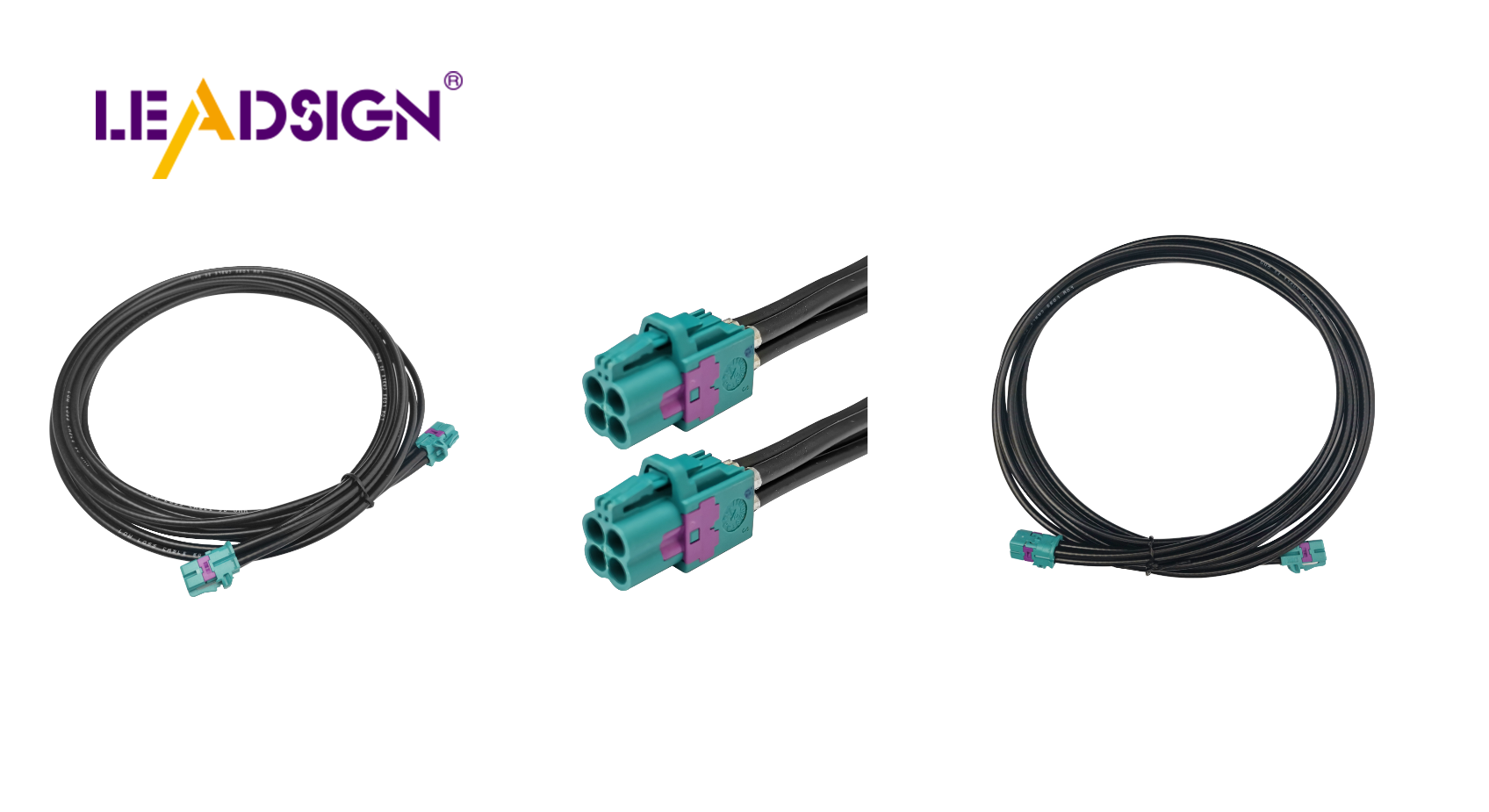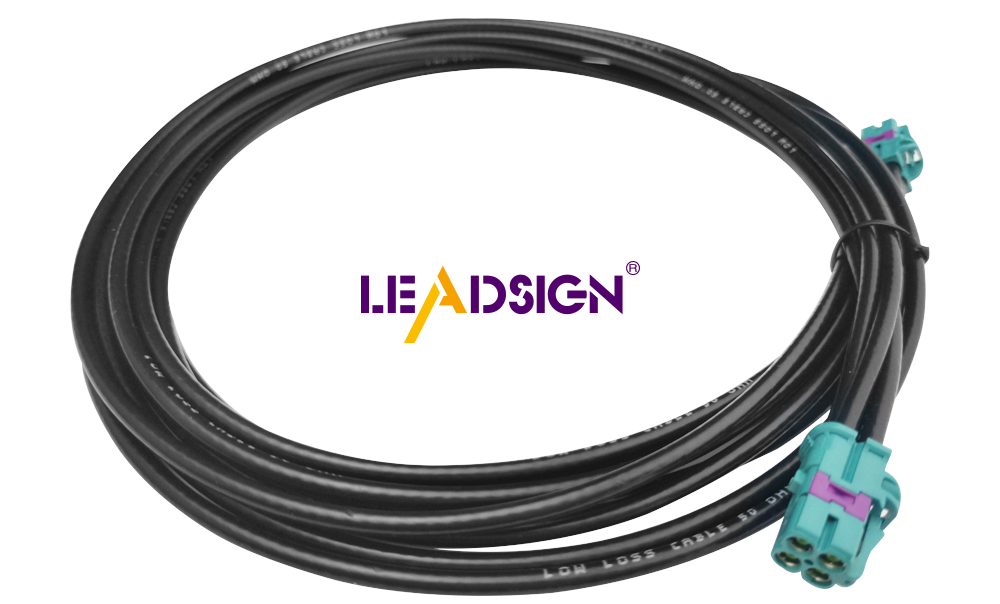Quick Tips for Identifying Automotive Wiring Connector Types

Understanding automotive electrical connectors types is crucial for effective vehicle maintenance. It saves time and prevents errors by allowing for quick identification. Consider how convenient it is to switch tools with quick disconnects; similarly, knowing about automotive connectors enhances your efficiency. This knowledge empowers you to make informed decisions and ensures the reliability of your car's electrical systems. In this guide, you'll discover valuable tips to confidently and accurately identify various automotive electrical connectors types.
Quick Identification of Automotive Electrical Connectors Types

Common Automotive Electrical Connectors Types
Knowing different automotive electrical connectors is important. Here are some common ones:
Blade Connectors
Blade connectors are used a lot in cars. They look flat like a blade. These connectors fit securely and are found in fuse boxes. They connect quickly, just like Quick Disconnect Fittings.
Bullet Connectors
Bullet connectors look like small bullets. They work well for low power jobs. You can find them in lights and other circuits. They connect easily and stay secure.
Pin Connectors
Pin connectors have pins that fit into sockets. They're used in sensors and controls. These connectors hold many wires tightly together.
Key Features for Identification
To identify automotive electrical connectors, notice these features:
Shape and Size
The shape helps tell the type of connector. Blade ones are flat, bullet ones are round, and pin ones have many pins.
Color Coding
Connectors often use colors to show their job. Red might mean positive, black might mean negative.
Material Composition
The material can help you know the connector's strength. Some are plastic; others are metal for more durability.
By learning these types and features, you can spot automotive electrical connectors fast. This saves time and keeps your car's systems working well.
Tools and Ways to Identify Fast
Finding out what type of automotive electrical connectors you have can save time. It also stops mistakes. Using the right tools makes this job easy. Here, you'll learn about tools and ways to help you find these connectors quickly.
Using Apps for Help
Apps can help a lot when finding automotive electrical connectors types. They make it easy to get info and compare connectors anywhere.
Popular Apps and What They Do
There are many apps to help find automotive electrical connectors types. Some well-known ones are:
Identiconn Connector Identification Utility: This app has a big list of connectors. You can search by shape, size, or color.
Connector Finder: This app helps find connectors by entering details like pin number or where it is in the car.
These apps often let you take pictures of a connector for quick results.
Tips for Using Apps Well
To use these apps best, try these tips:
Charge Your Device: Make sure your phone or tablet has enough battery before starting.
Take Good Photos: Take clear pictures when using image recognition.
Enter Correct Info: Put in exact details like shape and color for better searches.
Using these apps well helps you find automotive electrical connectors fast and make smart choices.
Guides with Pictures and Books
Guides with pictures and books are great for finding out about different connector types. They show detailed images that help you know them better.
Where to Get Good Guides
You can get good guides in many places:
Car Repair Books: Many repair books have parts about electrical connectors with drawings.
Online Sites: Websites about car repair often have guides to download.
Maker Websites: Some makers give online manuals for their cars, including connector info.
These guides give lots of info to help you know different connector types well.
Tips for Using Picture Guides
When using picture guides, remember these tips:
Look at Images Closely: Compare guide images with the ones you're working on.
Check Updates Often: Make sure online guides are current since designs change.
Use Many Sources: Check info from different guides to be sure of the connector type.
By using picture guides and books, you can get better at knowing different connector types and keep your car's systems working fine.
Steps to Find Out Connector Types
Finding out what kind of automotive electrical connectors you have can be hard. But if you do it step by step, it's easier. This guide will help you check and make sure you know the right connector type.
First Look
Begin with a good first look. This helps you get important details about the connector.
Look for Labels or Marks
Check for any labels or marks on the connector. Makers often put these there to show what type it is. These might be numbers, logos, or other signs. If there's a label, write it down. This info is key when checking with maker's guides later.
Compare with Known Samples
If you have known samples of automotive electrical connectors, compare them with yours. Seeing them side by side can help confirm the type. Keep common connectors handy as examples. This saves time and avoids mistakes.
Check and Test
After your first look, go on to check and test more. This makes sure you're right about the connector type.
Use Multimeters for Testing
A multimeter is great for testing automotive electrical connectors types. It checks if electricity flows well through them. Set it up right and touch its ends to the connector parts. A good reading means the connector works fine.
Check with Maker's Guides
Lastly, match what you found with maker's guides. Many makers give detailed info about their connectors online or in books like Toyota’s Wire Harness Repair Manual. Doing this confirms that your guess matches how it's made.
By doing these steps, you'll know different automotive electrical connectors types better. This helps keep your car's electric parts working well.
Common Problems and Fixes common problems and fixes
Finding out automotive electrical connectors types can be hard. You might see issues like no labels or broken parts. Here, you'll find easy ways to fix these problems.
Solving Unmarked Connectors
Connectors without marks are tricky. No labels make it tough to know them. But you can try some tricks to solve this.
Ways to Identify
Look Closely: Compare the unknown connector with ones you know. Keep common connector samples nearby for help. This can quickly show what type it is.
Use Tools: Try apps or online tools like Identiconn Connector Identification Utility. These let you enter details like shape and size to help find the right one.
Check Car Books: Sometimes, car books have pictures of connectors. Use these guides to match your unmarked connector with listed ones.
OEM Tools: Buy Original Equipment Manufacturer (OEM) tools for specific connectors. These work better than regular tools for finding the right type.
Ask Experts
If you're still stuck, ask an expert for help. Car experts know many automotive electrical connectors types and give good advice. They might also have special tools for exact identification.
Fixing Broken or Rusty Connectors fixing broken or rusty connectors
Broken or rusty connectors are another problem. They mess up electricity flow and hurt your car's performance. Here's how to fix them.
Cleaning and Fixing Tips
Check Well: Look at the connector closely for damage or rust signs like rust spots or cracks.
Clean Gently: Use a cleaner spray to remove rust carefully with a small brush, then dry it before putting it back together.
Fix Small Breaks: For small breaks, use tape or heat shrink tubing on open wires or tiny cracks.
Use Quick Disconnects: Add quick disconnects for easier serviceability; they make connecting and disconnecting simple, reducing wear on connectors.
When to Change Connectors
Sometimes cleaning isn't enough; you need new connectors to keep your car reliable.
Big Damage: If it's badly broken or missing parts, change it out—missing pieces cause electric failures.
Ongoing Issues: If problems persist after cleaning and fixing, replace the connector—it may have hidden internal damage.
Follow Maker's Advice: Listen to maker's rules on when to change them—some need replacing regularly due to limited life spans.
By knowing these problems and fixes well, you manage different automotive electrical connectors types better, keeping your car's systems in great shape.
Knowing automotive electrical connectors is key to keeping your car working well. Blade, bullet, and pin connectors are common types. Learning about them helps fix problems fast. Use apps and picture guides to get better at this. These tools make it easy to choose the right connector. Check online manuals and car repair books for more help. Ruston, our Operations Director, says having good info makes fixing cars easier and faster.
See Also
Exploring Ford Fakra Connectors: A Complete Overview
Understanding HSD Connectors: Key Concepts for Automotive Use
Why Fakra Connectors Matter in Today's Vehicles

